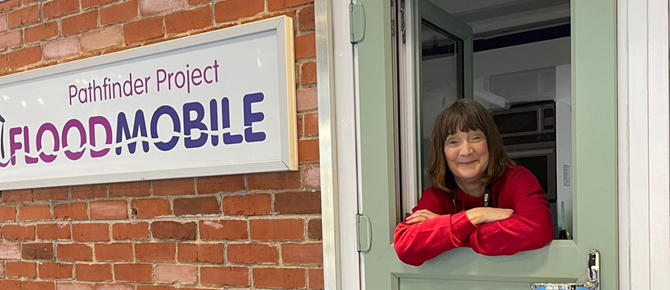Ageas | Helping your customers to handle frozen pipes
Sharing a few useful tips may prevent your household insurance customers from dealing with frozen pipes that could damage their homes and cause great distress.
How do frozen pipes cause a problem?
The trouble is, many problems with frozen or freezing pipes aren’t spotted until it’s too late. ‘Out of sight, out of mind’, as they say. Water expands when it freezes, sometimes with enough force to rupture water pipes. If that damage happens in an extension or roof space, the problems may only become apparent when the ice thaws, after a cold snap is over.
How to help your customers quickly and easily
You can make a difference. Now is a good time to check in with your customers with a short, helpful checklist that helps them take cold snap action. Some things are so simple:
• Make sure everyone in the household knows how to turn off the stopcock
• Put copies of a local qualified plumber’s details near the boiler and stopcock
• If they can afford to do so, leave the heating on a low setting and where possible, allow warm air from the home to circulate into colder areas like loft spaces
• If that's not possible, then wrap exposed pipes in soft foam to protect them from cold draughts and use an insulation jacket for any water tanks
There are some more reminders on reducing the risk of winter damage on this page. If you’re passing on the tips above, do feel free to share them:
Reducing the Risk of Home Damage in The Winter
Ageas – how we’re helping customers too
If the worst does happen, we’ll be here. One of our Claims Consultants, Matt Hill, explains how we reacted to this exact situation recently: In short, our customer had only realised something was wrong when water stopped coming out of her taps, with water literally running through the ceiling and down the walls. “No two claims for burst pipes are the same. It affects homes in very different ways,” said Matt. Our team responds with care and concern for the customer, as well as for the problem in hand. “She was obviously distressed by the damage,” Matt goes on: “the water had spread across the ceiling, down the walls into her carpets and through the electric light fittings. Although the leak had now been fixed, her much-loved home had suffered significant damage.”
After calling both a plumber to trace and fix the leak, and an electrician to fix the water-soaked junction box in the loft and the soaked light fitting and switch in the bedroom, our customer was in a state of shock when she called. Matt and the team were pleased they could help: “He made it clear from the outset, he was there to help me get this sorted,” she said, “ – and that the conversation would not end until I was satisfied that he had all the details that I wanted him to have, that I knew exactly what was going to happen next, that I knew who would be contacting me, that I had their contact details, and that a diary date would be put in place to check progress.”
A few simple measures – simple tips like the ones above – can help to prevent a lot of distress. In this instance, the water had soaked the insulation in a false ceiling, and the room needed to be dried by a professional drying company before repairs could begin. This can be a lengthy process as the drying time will be dictated by the amount of water that has escaped and the number of rooms affected.
Our customer was fortunate in that the water didn’t affect every room, and knowing how to handle a burst frozen pipe made the situation slightly easier to deal with: “I’m so glad I knew where my water stopcocks are so I could react quickly and turn the water off, turning all the taps fully on to drain water out of the system. I’ve also become an expert in loft insulation and frost protection cables that kick in during cold weather to stop pipes freezing – this isn’t something I ever want to go through again.
Finally, how do customers know if pipes are freezing?
Signs that pipes have frozen or may be on their way to freezing include little or no water coming from the taps or showerhead, and exposed pipes may appear frosty or wet.
Unusual noises may be also heard when flushing a toilet or using a sink, which could be signs of air trying to escape pipes through a blockage. Damp patches or rings on walls or ceilings could also be a sign that there’s been a leak from a pipe that is not visible.
Passing on the simple tips above could help to prevent some of these problems and reduce the amount of distress caused by freezing pipes and associated problems.
 What's next for Personal Lines insurance?
What's next for Personal Lines insurance?



